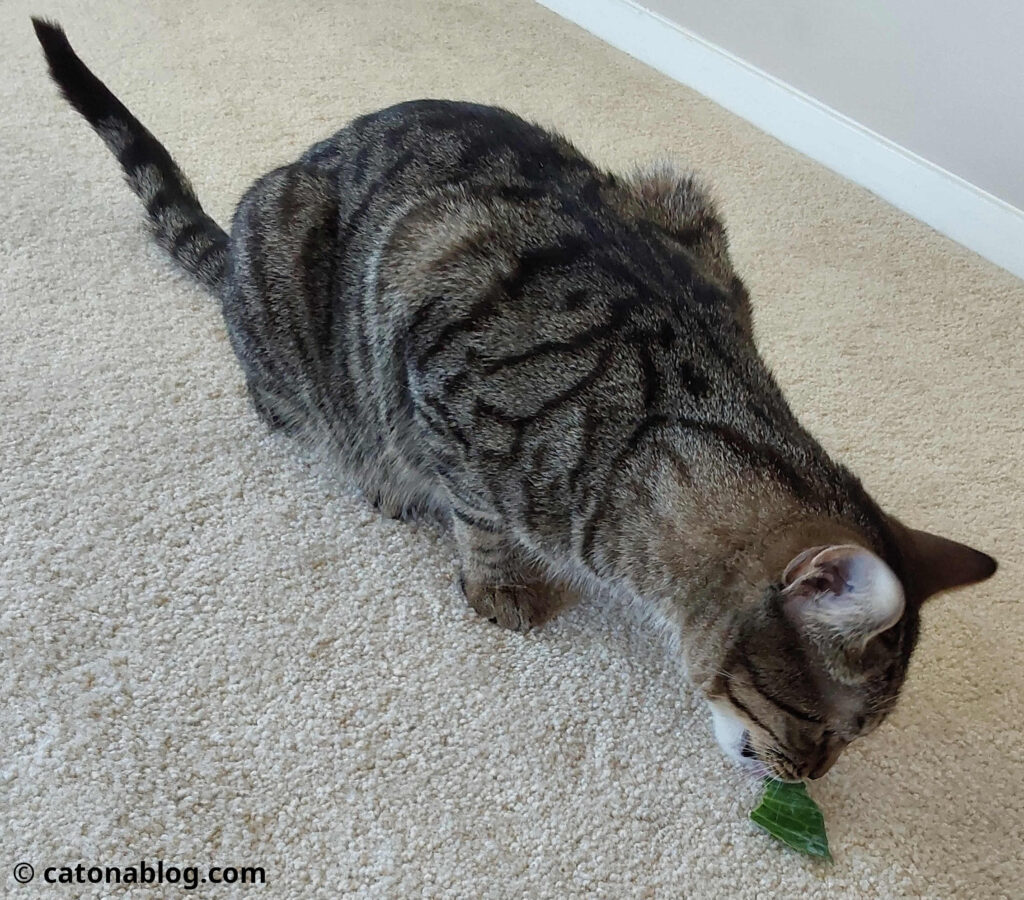
Apr 8th, 2025 Tuesday Sunny
I had the pleasure of having lunch and catching up with an old friend last Friday. We had not seen each other for almost a year, and had much to talk about.
He has been working on a project to design an indoor farming solution in shipping containers for developing countries in hot climates, so farmers there can grow cold-loving produce, such as lettuce. To experiment with the prototype, his team planted lettuce in their product, and harvested the leaves to feed a pet rabbit.
I commented that one of my kitties, Sesame, is also very eager for lettuce.
“In fact, he LOVES any leafy veggies so much that you can lure him out from a hiding place by waggling a piece of leaf, even though he is not much moved by a bag of cat treats.” I added with a chuckle.
“Is that normal?” My companion was surprised and, not having lived with a cat, innocently posed the question.
How do we want to define “normal”? The word shares the same root as the statistical concept “norm”, which refers to the most popular option. Applying this word to daily context has a clear caveat though, because norm is determined by tallying the occurrences of different categories, and whichever category has the highest number is the norm – even if it only “wins” by a count of one. If we suppose (for simplicity’s sake) there are only three colors for cats – black, orange, and tabby, each taking up 33%, 33%, and 34% of cat population, then tabby cat would be considered as the norm. I am sure the other two cat families will not be too delighted with this designation.
Another common way that “normal” is used relates to “average”, or what is deemed “typical”. Average is a useful tool to guess how much food a single cat would eat in one day, WHEN there is no other information available. In reality, as every cat parent knows, the amount of kibbles/cans your cat needs is affected by their age, body weight, active level, health, and many other factors (e.g. appetite), that in some way, the “average cat” does not exist. This aggregate is helpful for the keepers of a cat zoo that houses two hundred cats, so they can estimate how many bags of food to order at a time, but that is the extent of its value. For those with only one or two fur babies at home, measuring and watching their diet each day and adjusting accordingly seem more likely to yield happy and healthy kitties.
Actually, life would be a lot more exciting if we stop judging others (and ourselves) against “the normal” and feel conscious about the deviation. We all have our own quirks and uniqueness that make us who we are, and every one of us walks on a distinct path that is our own journey. Accepting that no two beings are exactly alike, and giving up the expectation that so-and-so should be like this, would open our eyes to discover so much more.
So long as it is not doing any harm, it is normal to be different.
As for the case of Sesame, well, I can say that I have never seen another cat so fond of greens. Still, felines in the wild do consume and have the ability to digest some plants, since their preys are all herbivorous, and these “salads” supply important vitamins. Occasionally they also munch on grass to clean their teeth. So normal or not, if Sesame’s enthusiasm about vegetable and chewing can be satisfied with cabbage and the like, thus leaving our hanging towels alone, I am perfectly fine with it.